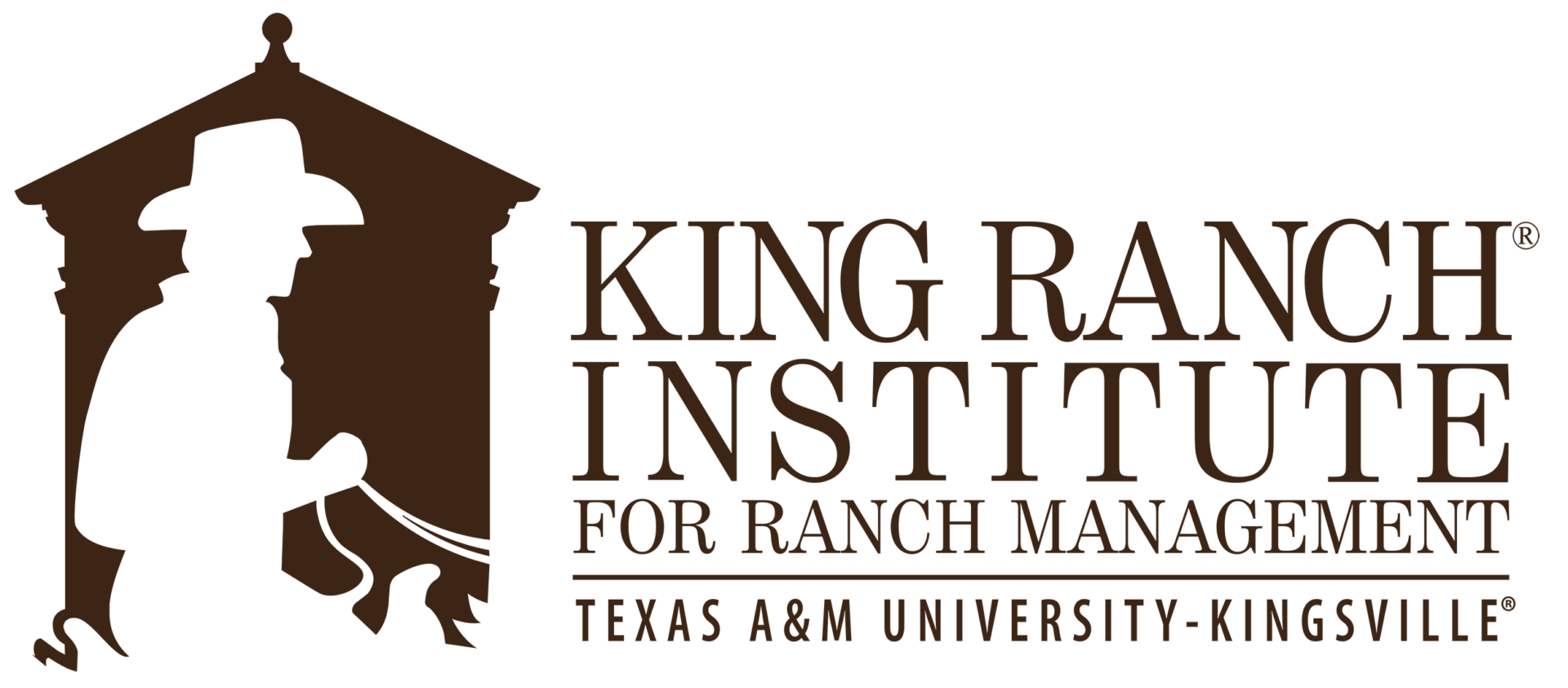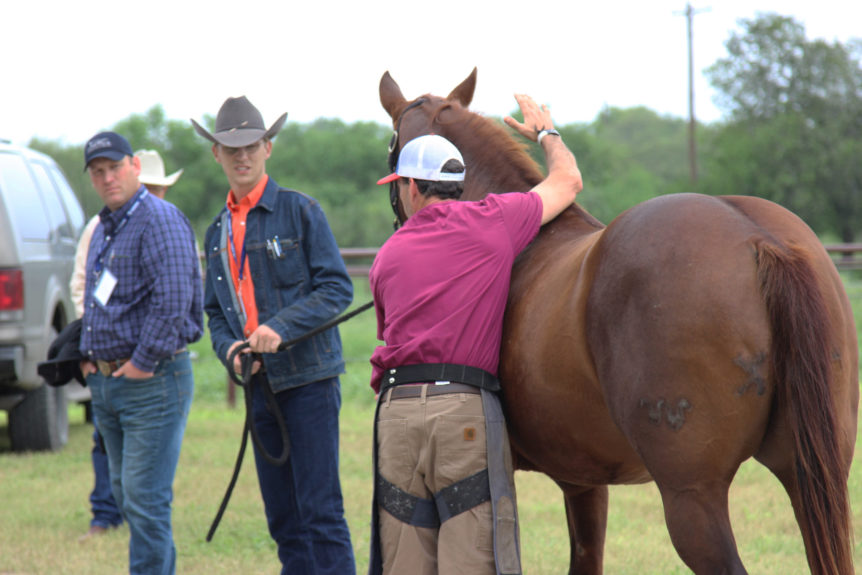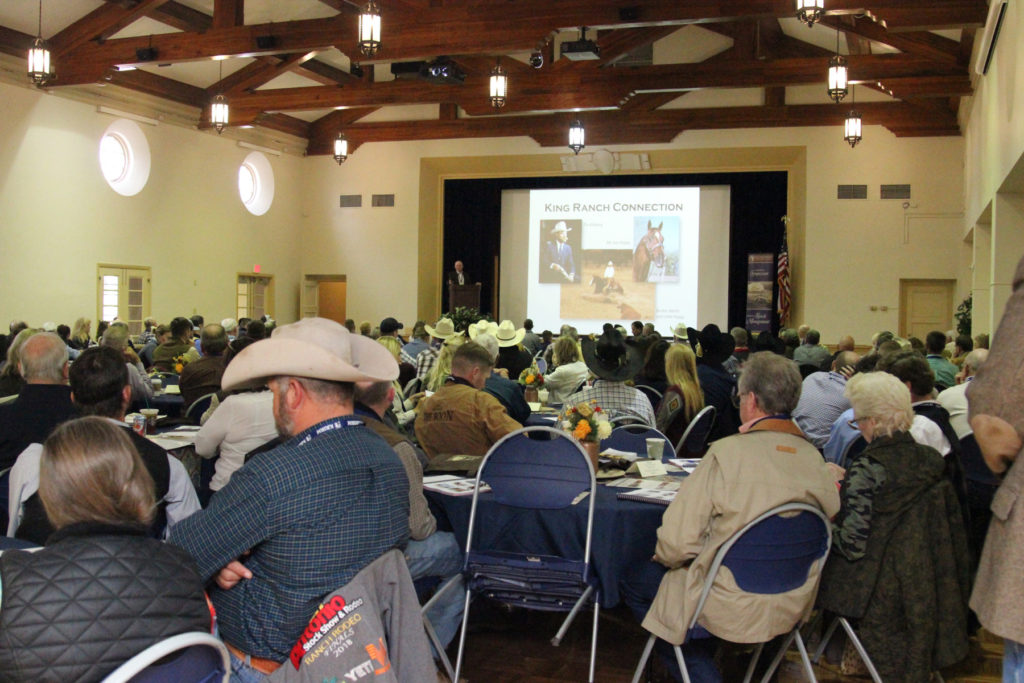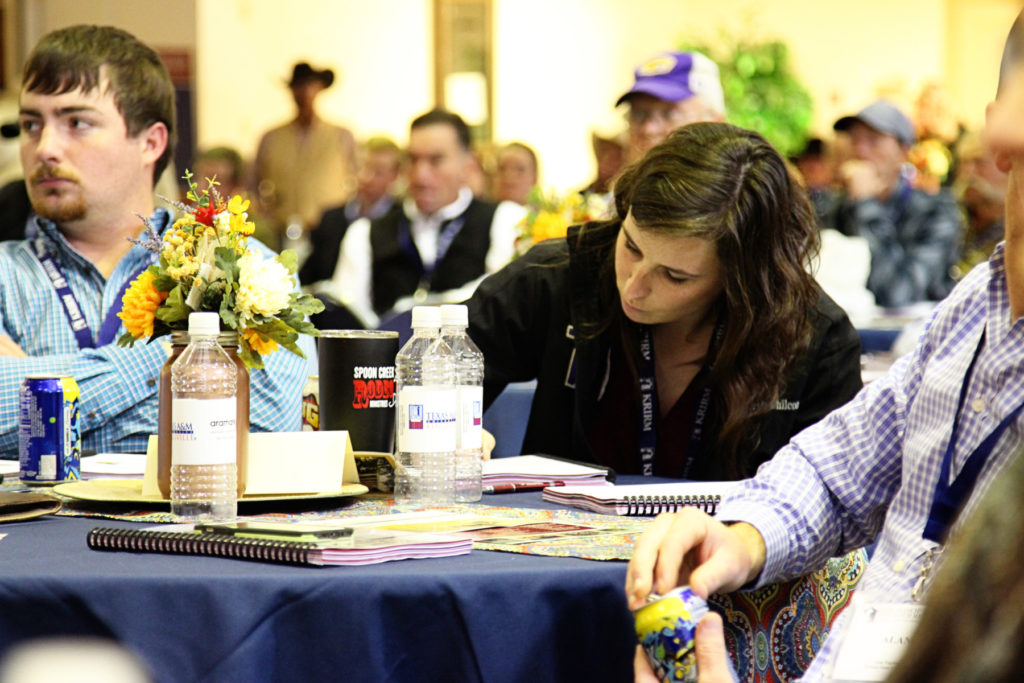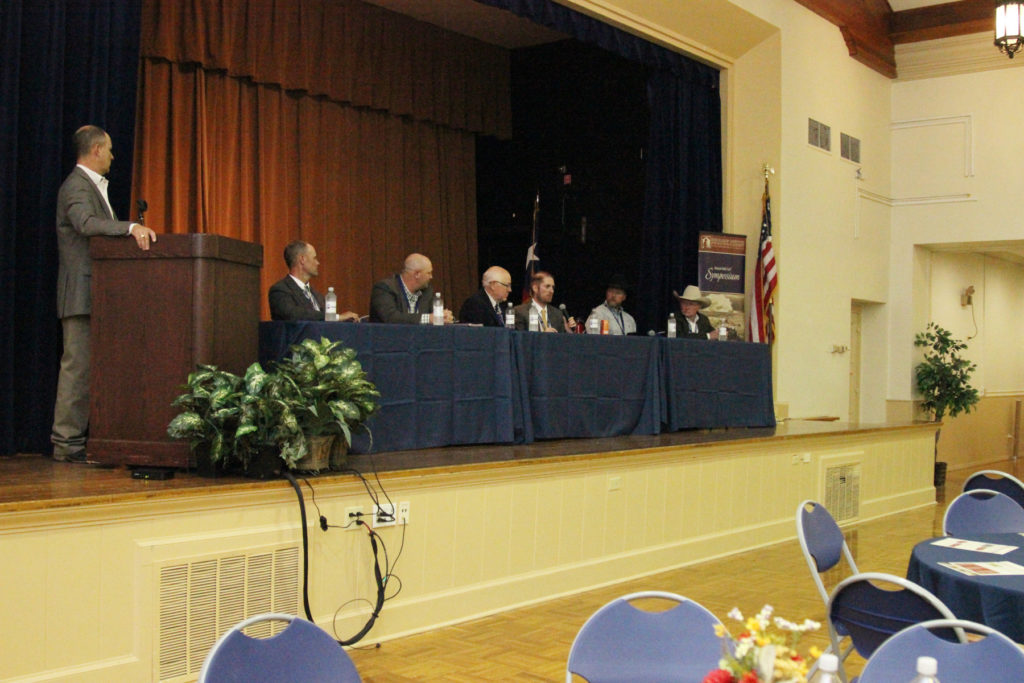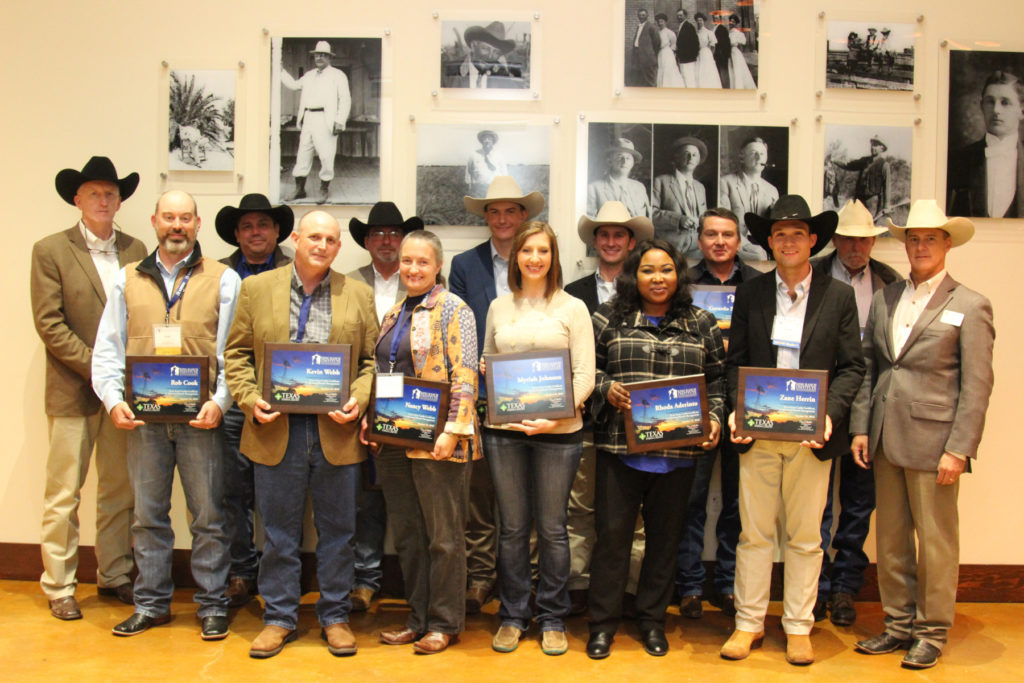FOR IMMEDIATE RELEASE
Kingsville, Texas (Oct. 29, 2018)—A variety of ranch horse topics were discussed at the 15th Annual Holt Cat® Symposium on Excellence in Ranch Management last Thursday and Friday in Kingsville, Texas. Experienced horsemen, practicing veterinarians, and ranch managers shared their horse program success experiences including horse safety, legal risk, ranch economics, health, nutrition, reproduction and more.
The symposium, Horse Program Success on Working Ranches hosted by the King Ranch® Institute for Ranch Management (KRIRM), attracted nearly 250 attendees from 25 states and Washington, D.C.: in sum, more than six million acres of ranchland were represented by attendees. The keynote address was presented by John Welch of Welch Cattle Company in Wolfforth, Texas. With decades of ranching experience, Welch offered participants a unique view on two approaches for successful ranch horse programs: horses as a profit center and horses as a support center. Welch illustrated the big picture of the ranch horse’s place in the operations as a co-worker and tool that benefits employee recruitment and retention, and aides in the improvement of stockmanship and cattle performance.
Ranch horse safety was discussed by Bob Kilmer of Matador Ranch in Matador, Texas. Kilmer shared the ranch’s experience initiating change in regards to employee and horse safety after a record-number of accidents on the ranch in 1999. The change, he explained, began with himself as manager, followed by the mindset of the team. Protocols and guidelines were implemented to help the team understand their important role in preventing accidents. After two years, the results of the change showed a positive change in attitude, improved horsemanship skills, and growth in employee pride of the program. Kilmer reiterated that the safety program at Matador is an ongoing process to improve and make positive changes.
Horses and ranching operations come with much risk that must be understood by managers and owners. James Decker, an agricultural attorney from Stamford, Texas, explained how guests on the ranch fit into different legal categories and provided advice on reducing legal risk exposure for the ranch. The best legal policy, said Decker, is to strike a balance between workability for the parties that limits your risk and protects management/ownership.
Equine Nutrition consultant Dr. Dennis Sigler explained ranch horse nutrition and feeding guidelines, suggesting the key for healthy horses is regular exercise and feeding to meet the energy demands associated with daily work the horse is performing. Such strategy is seldom that easy, and Sigler went into more detail about conditioning and nutrient requirements of the working horse. Feeding recommendations of a 1,100 pound horse at maintenance or performing light, and heavy work was illustrated. Sigler advised attendees to follow good management practices with routine vaccinations, regular exercise, providing quality forage, and feeding a balanced diet.
Glenn Blodgett, DVM of 6666 Ranch in Guthrie, Texas, outlined a basic preventative health program for ranch mares and saddle horses. He emphasized that the horses’ health and well-being are a vital component of all successful ranching operations and no two ranches share the same health risks. Relative to health risk management, Blodgett stressed the importance of a biosecurity program and isolation of new horses and horses that have been traveled off-ranch to work or compete. Blodgett also shared fencing, housing, and nutrition guidelines.
Equine reproduction technology has advanced significantly in the past 20 years according to Ben Espy, DVM. Dr. Espy explained the relationship between a mare’s exposure to light and her ovarian activity, management of light exposure and estrus synchronization protocols. He also enumerated his experiences with handling semen and techniques that contribute to artificial insemination success.
The question of buying versus raising saddle horses was illustrated by ranch economist and KRIRM Associate Instructor Stan Bevers through a scenario that showed the cost to produce colts, a two-year-old filly or gelding, and three-year-old mares and geldings (mature horses). The costs were compared to the results of the 2017 Return to the Remuda Sale, and Bevers advised attendees to consider the question of what financial benefit is derived from the remuda to other ranch enterprises and activities.
A ranch manager panel with representatives from Parker Ranch, Singleton Ranches, and Sooner Cattle Company discussed horse strategies and policies. Attendees were able to ask these ranchers questions about how the ranch deals with riding outside horses, incentive programs, ranch rodeos, tack allowance, hoof and health care. This panel provided attendees with multiple perspectives from different types of horse programs from various geographical regions across the country.
A King Ranch Demonstration and Equine Tour concluded the symposium on the afternoon of Friday, October 19th. King Ranch Horse Division Manager James Clement, III and VP of Ranching and Wildlife Operations Dave DeLaney spoke to attendees about the rich history behind the King Ranch horse program, where it stands today, and its outlook for the future. While Clement and DeLaney discussed the history, King Ranch vaqueros demonstrated the athletic ability of the King Ranch horses and halter breaking weanlings. A lameness diagnosis and treatment demonstration and discussion was led by ambulatory equine veterinarians Ben Espy and Kurt Heite.
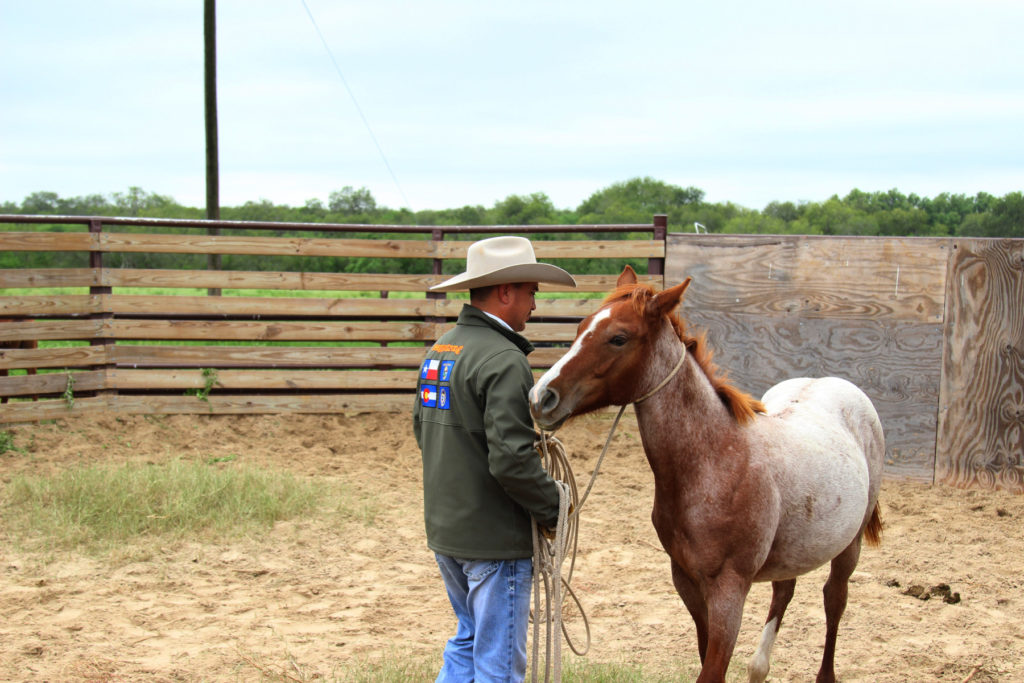
While the King Ranch horse program was discussed, attendees were able to view a halter breaking demonstration.
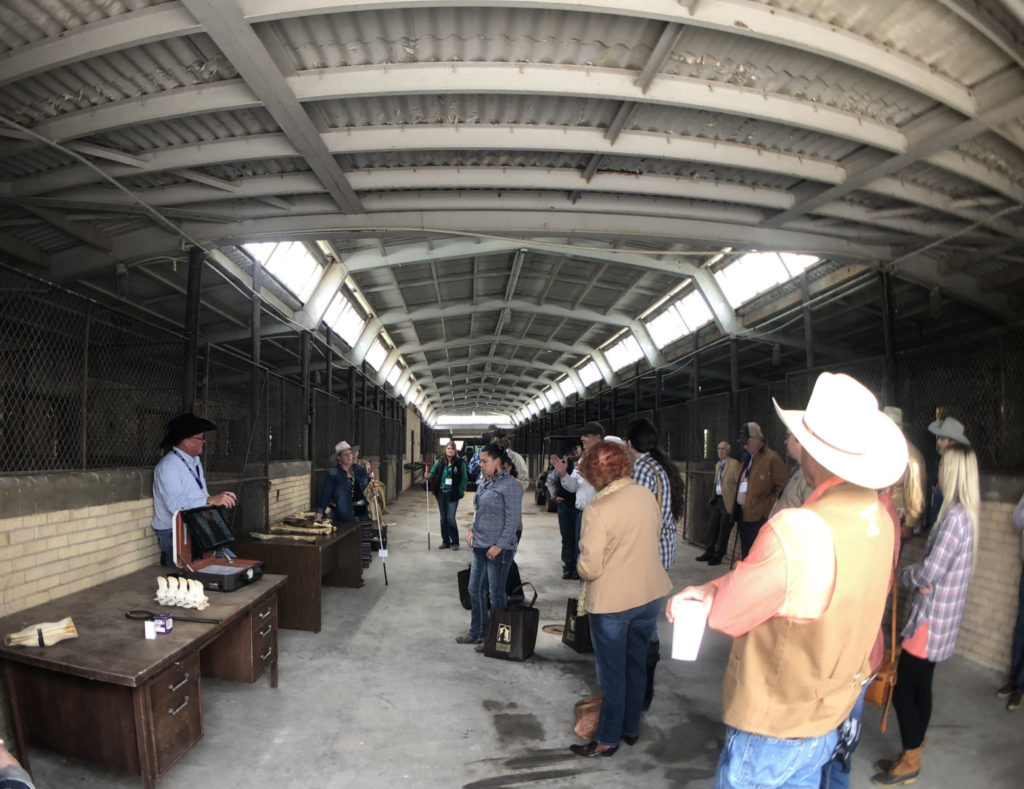
Dr. Kurt Heite spoke to attendees about lameness diagnosis and treatment during the demonstration and tour of King Ranch.
A social and prime rib dinner recognized 13 individuals who received their Texas Farm Credit Certificate in Advanced Ranch Management. These individuals earned their certificate by attending four KRIRM lectureships and two symposia during a three-year period. Dr. Jim Heird, President of the American Quarter Horse Association (AQHA), spoke about the mission and commitment of AQHA to the ranching industry.
Watch the video below to see more of the highlights from symposium.
About KRIRM
Formed in 2003, KRIRM is a ranch management master’s program at Texas A&M University-Kingsville created in honor of the 150th Anniversary of the legendary King Ranch. As the only ranch management master’s program in the world, KRIRM teaches graduate students using a multi-disciplinary, systems approach to ranch management. The institute also provides the highest quality lectureships and symposia to stakeholders in the ranching industry through its event outreach component. For more information about KRIRM, visit krirm.tamuk.edu.
###
MEDIA CONTACT: Ashley Patterson, ashley.charanza@tamuk.edu
